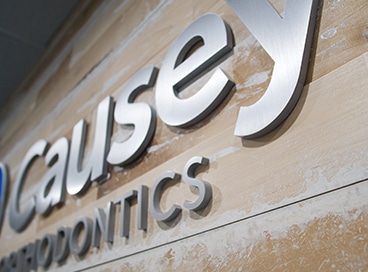Orthodontics for Beginners
Orthodontics for Beginners
Blog Article
Orthodontics - The Facts
Table of ContentsAll about OrthodonticsOrthodontics Can Be Fun For EveryoneNot known Details About Orthodontics Rumored Buzz on OrthodonticsTop Guidelines Of OrthodonticsThe Main Principles Of Orthodontics Some Known Incorrect Statements About Orthodontics
You may feel some discomfort for some time when your dental braces are first placed on and when they are adjusted. It will take a little time to get used to your braces and they can bother your lips and cheeks - Orthodontics. If this happens, a relief wax can be related to your dental bracesIt is essential to brush your braces along with the front, back and chewing surfaces of the teeth. Your dentist or orthodontist will offer you ideas on how to comb and on just how to floss making use of floss threaders. After flossing, roll it up in a little ball and put it in the waste.
Parents need to monitor their children to make certain they do a great work cleansing their teeth and dental braces and follow the recommendations of their dentist or orthodontist. If you have dental braces, do not attack on tough things such as ice dices and nuts. Do not eat completions of pens or pencils.
Not known Factual Statements About Orthodontics
Problems that are not repaired can cause the therapy to last much longer. Todays braces are smaller sized and much less visible. The standard steel braces, there are tooth-coloured ceramic dental braces that are much less noticeable. Clear aligners are also available for adults. Dental braces and elastics can additionally be multicoloured. Speak with your dental practitioner or orthodontist concerning all your options.
It guides the direction of tooth activity and jaw growth in a person who is still expanding. There are various kinds of headgear and they might be put on during any kind of part of the orthodontic therapy. Your orthodontist or dental practitioner will show you exactly how to place on the headwear and tell you exactly how long to use it every day.
Orthodontics for Beginners
They may need to be put on all the time or component of the moment. Tooth removal may be required if your teeth are crowded or if a tooth is severely out of placement. Jaw surgery (or orthognathic surgical procedure) may be required when there are significant distinctions in the size or position of the top and lower jaws.
An orthodontist is a dental practitioner educated to diagnose, protect against, and deal with teeth and jaw abnormalities. Orthodontists function with people of all ages, from youngsters to adults.
The 6-Second Trick For Orthodontics
All orthodontists are dentists, yet not all dental experts are orthodontists. Orthodontic residency programs use extensive, focused instruction for oral professionals. They focus on 2 areas: Just how to effectively and safely relocate teeth Just how to effectively direct development in the teeth, jaw, and faceOnce an orthodontist has completed training, they have the choice to end up being board certified.
Indicators on Orthodontics You Should Know
If you have only minor malocclusion, you may have the ability to use clear dental braces, called aligners, as opposed to traditional dental braces. Some people need a headgear to aid relocate teeth right into line with stress from outside the mouth. After braces or aligners, you'll need to wear a retainer. A retainer is a customized tool that maintains your teeth in location.
They're most typically used on youngsters. They can produce added area in the mouth without needing to draw teeth. If you have a significant underbite or overbite, you could require orthognathic surgical treatment (likewise called orthodontic surgery) to extend or reduce your jaw. Orthodontists make use of cables, surgical screws, or plates to support your jaw bone.
All About Orthodontics

An orthodontist is focused on your bite, so something like a broken tooth would certainly be handled by a dentist. Orthodontists are focused on your bite, or the way your teeth fit with each other, and the straightness of your teeth.
One of the signs of a beautiful smile is a healthy set of teeth and excellent oral health. The majority of individuals have actually gapped, misaligned, unequal teeth that can make them incomplete.
The Definitive Guide for Orthodontics
Orthodontic treatment is known for its ability to change smiles, yet its benefits extend beyond plain aesthetic appeals. Some of these advantages are: One of the significant orthodontic devices is that it launches a transformative process past tooth alignment.

These changes are Your Domain Name important for reference keeping progress and guaranteeing the therapy remains on track according to the well-known strategy. The orthodontist establishes a tailored treatment plan based on the diagnostic documents and the person's one-of-a-kind needs and preferences. This strategy details the advised action to deal with the recognized orthodontic problems and accomplish the wanted result.
Report this page